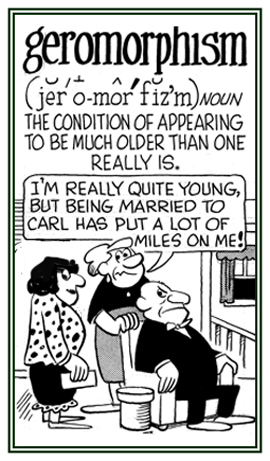morpho-, morph-, -morphous, -morphically, -morphia, -morphosis, -morphously, -morphy, -morphic, -morphism
(Greek: shape, form, figure, appearance)
Origins of morpho- words
The Roman god of sleep is Somnus; so, when we are sleepy, we are "somnolent". Sleep walking is "somnambulism" which in Latin means exactly the same thing; that is, "sleepwalking".
The son of Somnus is Morpheus, the god of dreams, indicating that sleep gives birth to dreams. Morpheus goes back through Latin to the Greek word for "form" or "shape" because dreams are forms and shapes developed in the mind while sleeping.
Geomorphologists seek to understand landform history and dynamics, and predict future changes through a combination of field observations, physical experiments, and numerical modeling.
The discipline is practiced within geology, geography, archaeology, and civil and environmental engineering. Early studies in geomorphology are the foundations for pedology, one of two main branches of soil science.
Geomorphology is the science of landforms. It is the science that provides us with a closer look at the Earth's surface and the processes that have formed them.
Although geomorphology is concerned with landforms that currently exist, past landforms and events must be examined in order to fully understand how they came about.
Although the term geomorphology is a relatively new term (1880s), the examination of the forces of nature that have impacted the Earth's surface extends back into the days of early Greek and Roman philosophers, such as Aristotle and Seneca.
Their writings included ideas on stream erosion, earthquakes, and other deformations. Though these early philosophers speculated on the ideas of landscape evolution, these processes and thoughts were not fully examined until just before the 1800s.
2. The impression of having lived for a longer time than one really has; premature senility: Jack’s father suffered from geromorphism because he had worked so hard on the farm all his life and was quite old and weak at the age of 35.

Go to this Word A Day Revisited Index
so you can see more of Mickey Bach's cartoons.
2. In biology, a degree of evolutionary specialization of a species that decreases its ability to adapt and ultimately leads to its extinction.
gynandromorphous


